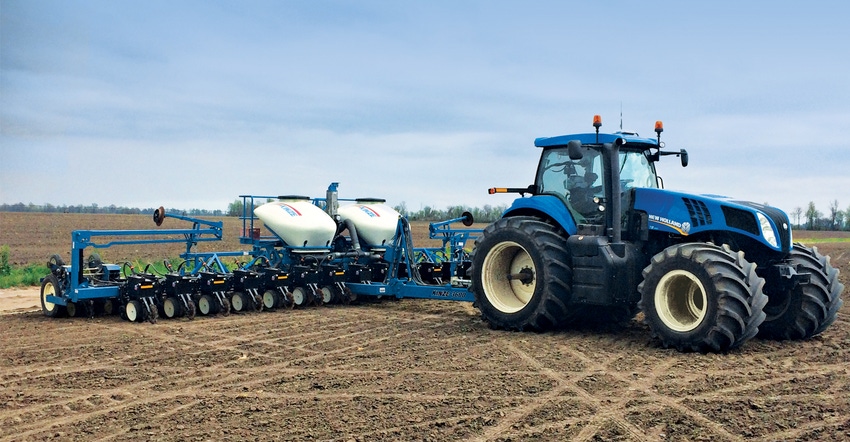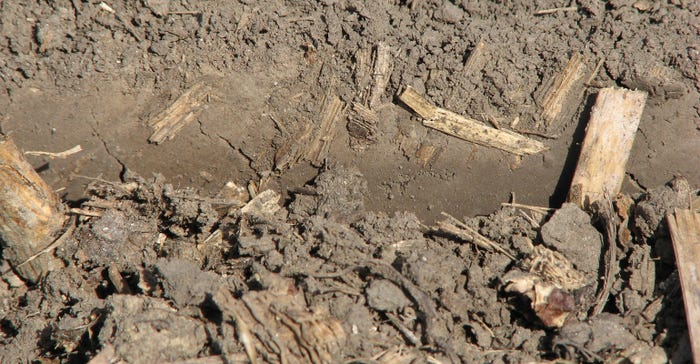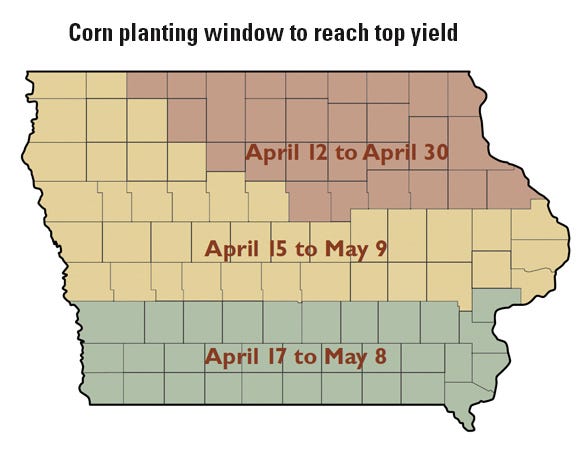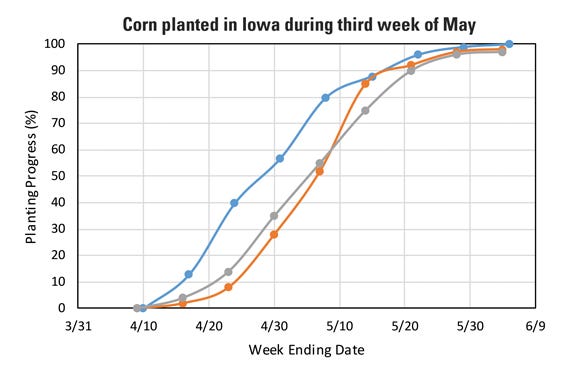April 23, 2018

By Mark Licht and Nick Upah
This spring has already brought on concerns about poor weather resulting in delays on corn planting. At this point in time, there is still time. It is highly important to remain patient and wait for the right corn planting conditions. Planting into marginal conditions can result in problems all season long that could outweigh the benefit of planting too soon.
Evaluate soil conditions
It is recommended to plant corn into soil that will provide good seed-to-soil contact with soil temperatures at 50 degrees F and rising. Corn does not germinate below 50 degrees and seed sitting idle is at greater risk of infection by disease pathogens and feeding from insects. An increased number of days from planting to emergence leads to poor emergence, poor crop growth, and a possible need for replanting.
 TOO WET TO PLANT: Sidewall compaction often results from planting into marginal conditions, restricting root growth, which leads to other problems.
TOO WET TO PLANT: Sidewall compaction often results from planting into marginal conditions, restricting root growth, which leads to other problems.

Other soil conditions are just as important as soil temperature. Planting into soil that is too wet can have repercussions on plant and root growth. Sidewall smearing results in roots that are concentrated in the seed furrow. This leads to poor root growth, an increased risk of nutrient and moisture deficits, and vulnerability to high winds.
Corn planting window
It is recommended to plant corn in Iowa from mid-April to early May to achieve the highest potential yield. The exact dates differ from year to year and depending on what part of the state you are from. This is due to different climate factors such as precipitation, spring soil and air temperatures, and length of growing season.

These corn planting windows over the years are when corn has achieved 98% of its yield potential.

Recent research suggests waiting to plant can cause a larger yield decrease compared to planting early. For instance, in central Iowa from 2014 to 2016, the highest yield potential was attained with early May planting dates. Planting in mid-April resulted in 95% yield potential and planting in early June resulted in 81% yield potential. While early planting will not always result in the highest yield potential, waiting to plant corn until late May or early June can cause significant decreases in yield.

This chart shows the percentage of the Iowa corn crop planted by week in 2016 and 2017 compared with the five-year average. Source: USDA NASS

Historical planting trend
While many farmers found 2017 corn planting to be a spring of playing catch-up compared to 2016, the 2017 planting progress ended ahead of the five-year average. It is still too early to tell how 2018 planting progress will proceed and early indications do not look promising.
Looking at corn planting progress and prospective planting reports from 2014 to 2017, the peak planting progress occurred with an average estimated pace of 1.2 million acres planted per suitable day in Iowa (range of 0.94 million to 1.34 million acre per suitable day). This peak planting rate typically occurred the last week of April to the first week of May.
Choosing corn hybrid maturity
What if corn planting is delayed into mid- to late May? Should you switch to an earlier maturing hybrid or keep what you had planned for? Preliminary research indicates that in northern Iowa longer season hybrids can have a greater yield potential whereas hybrid maturity is much less influential on yield potential in central and southern Iowa regardless of planting date, assuming that hybrids adapted to the area are used.
While there may be no benefit in yield potential to planting an earlier hybrid maturity, there can be risk management consideration. The main consideration must be fall frost risk. For this reason, it is recommended to plant well-adapted hybrid maturities through May or early June planting dates. If planting gets delayed further, consideration should be given to earlier hybrid maturities to ensure crop maturity before fall frost occurs.
An additional consideration would be to switch crops to soybeans if corn herbicides that have already been applied would not interfere with soybean germination and emergence.
Licht is the Iowa State University Extension cropping systems agronomist. Contact him at [email protected]. Nick Upah is an ISU grad student in agronomy.
You May Also Like




